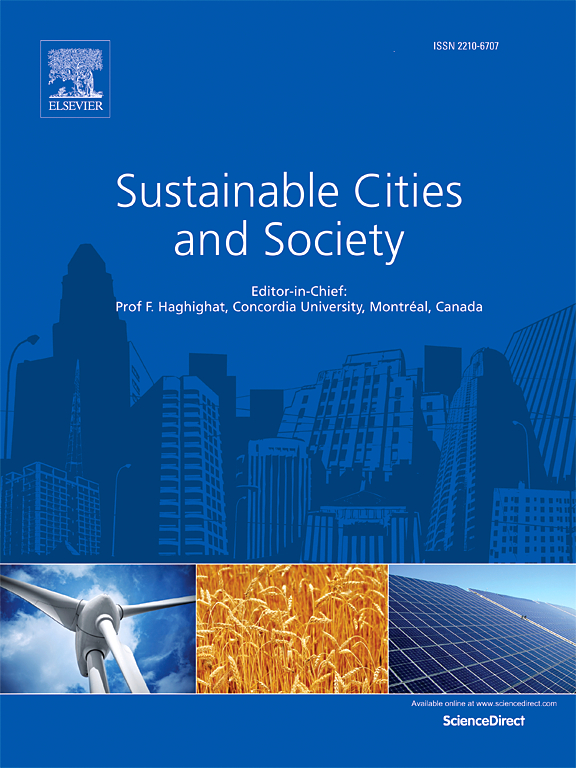CFD -局部和全身混合PBPK在室内化学暴露建模中的综合集成框架:一项吸入暴露研究
IF 10.5
1区 工程技术
Q1 CONSTRUCTION & BUILDING TECHNOLOGY
引用次数: 0
摘要
邻苯二甲酸二(2-乙基己基)酯(DEHP)是环境中最普遍的邻苯二甲酸酯,被认为是一种内分泌干扰化学物质,可导致多个器官功能障碍。本研究采用了一种新的基于计算流体动力学(CFD)的污染物运输分析和基于局部-全身混合生理的药代动力学(PBPK)模型来阐明吸入暴露对DEHP及其代谢物在人体器官中的系统处置。建立呼吸道局部PBPK模型,采用CFD和空气-粘液-组织-血液(AMTB)模型研究呼吸活动过程中DEHP在呼吸道组织中的运输和扩散。这与全身PBPK模型无缝连接。验证工作验证了CFD和局部全身混合PBPK模型的可靠性。发现DEHP的吸收和血浆摄取依赖于气道组织厚度和形态。可视化显示呼吸表面DEHP分布不均匀。全身PBPK模型追踪DEHP在肝脏和肠道中的代谢。作为生化和生理参数的函数,不同器官的累积浓度曲线存在显著差异。暴露后的监测揭示了脑、骨、皮肤、脂肪、性腺和肌肉的缓慢清除。在本研究涵盖的浓度水平上,对暴露浓度与气道累积组织浓度和器官浓度之间的比例关系进行了量化。这些结果巩固了目前的技术作为一种可靠的工具,将室内DEHP暴露与通过吸入对人体健康的相应不利影响联系起来。本文章由计算机程序翻译,如有差异,请以英文原文为准。
Comprehensive integration framework of CFD – Local and whole body hybrid PBPK in indoor chemical exposure modeling: An inhalation exposure study
Di(2-ethylhexyl) phthalate (DEHP) is the most pervasive phthalate in the environment and is identified as an endocrine-disrupting chemical causing dysfunction in multiple organs. This study has employed a novel Computational Fluid Dynamics (CFD)-based pollutant transport analysis and a local-whole-body hybrid physiologically based pharmacokinetics (PBPK) model to elucidate the systematic disposition of DEHP and its metabolites in human organs via inhalation exposure. A local PBPK model was constructed for the respiratory tract, employing the CFD and air-mucus-tissue-blood (AMTB) model to investigate the DEHP transportation and diffusion through the respiratory tissue during breathing activities. This is seamlessly linked with the whole-body PBPK model. As a result, the validation work demonstrates the reliability of the CFD and local whole-body hybrid PBPK model. The absorbed and plasma uptake of DEHP were found to be dependent on the airway tissue thickness and morphometry. Visualization reveals a non-uniform DEHP distribution over the respiratory surface. The whole-body PBPK model tracks DEHP metabolism in the liver and intestine. Cumulative concentration profiles significantly varied across organs as a function of biochemical and physiological parameters. Post-exposure monitoring unveils a slow clearance in the brain, bone, skin, adipose, gonads, and muscle. At the concentration levels covered in this study, a proportional relationship was quantified between the exposure concentration to the cumulative airway tissue concentration and organ concentration. The results consolidate the current technique as a reliable tool to link indoor DEHP exposure to the corresponding adverse effects on human health via inhalation.
求助全文
通过发布文献求助,成功后即可免费获取论文全文。
去求助
来源期刊

Sustainable Cities and Society
Social Sciences-Geography, Planning and Development
CiteScore
22.00
自引率
13.70%
发文量
810
审稿时长
27 days
期刊介绍:
Sustainable Cities and Society (SCS) is an international journal that focuses on fundamental and applied research to promote environmentally sustainable and socially resilient cities. The journal welcomes cross-cutting, multi-disciplinary research in various areas, including:
1. Smart cities and resilient environments;
2. Alternative/clean energy sources, energy distribution, distributed energy generation, and energy demand reduction/management;
3. Monitoring and improving air quality in built environment and cities (e.g., healthy built environment and air quality management);
4. Energy efficient, low/zero carbon, and green buildings/communities;
5. Climate change mitigation and adaptation in urban environments;
6. Green infrastructure and BMPs;
7. Environmental Footprint accounting and management;
8. Urban agriculture and forestry;
9. ICT, smart grid and intelligent infrastructure;
10. Urban design/planning, regulations, legislation, certification, economics, and policy;
11. Social aspects, impacts and resiliency of cities;
12. Behavior monitoring, analysis and change within urban communities;
13. Health monitoring and improvement;
14. Nexus issues related to sustainable cities and societies;
15. Smart city governance;
16. Decision Support Systems for trade-off and uncertainty analysis for improved management of cities and society;
17. Big data, machine learning, and artificial intelligence applications and case studies;
18. Critical infrastructure protection, including security, privacy, forensics, and reliability issues of cyber-physical systems.
19. Water footprint reduction and urban water distribution, harvesting, treatment, reuse and management;
20. Waste reduction and recycling;
21. Wastewater collection, treatment and recycling;
22. Smart, clean and healthy transportation systems and infrastructure;
 求助内容:
求助内容: 应助结果提醒方式:
应助结果提醒方式:


